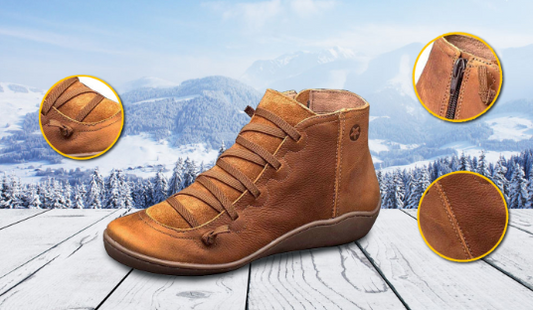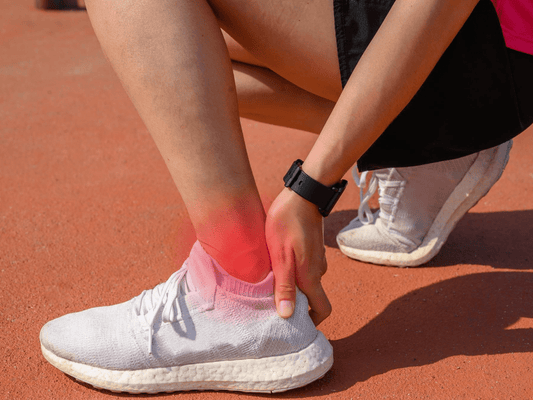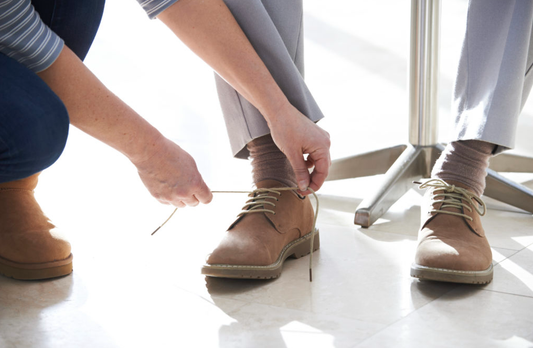Our feet always silently bear the weight of our bodies, yet we never notice what they go through each day.
Unfortunately, many of us do not wear right shoes, which often share these characteristics: a narrow toe box, a hard and heavy sole, poor breathability, high heels, and no arch support. Among these, the most detrimental to foot health are shoes with a narrow toe box, as many foot problems primarily stem from toes being squeezed inside the shoe, meaning the toes cannot spread evenly.
Next, check out the 5 foot conditions you can avoid by wearing the right shoes.
- Bunions
A prevalent foot condition is bunions, which is significantly more common among women than men, largely attributed to the type of footwear worn. A bunion develops when there's a displacement of the first metatarsal bone. This displacement causes the big toe to angle inward, resulting in the formation of a bony bump on the outside of the joint.
Although factors such as aging and weak connective tissues can contribute to the bunions, the primary offenders are tight shoes that restrict the distribution of toes. Shoes with high heels and pointed toes exacerbate the issue by cramming the toes into a confined area.

- Hammer toes
Hammer toes are another foot condition that is largely influenced by improper footwear. A hammer toe is a deformity of the second, third or fourth toes. In this condition, the toe is bent at the middle joint, so that it resembles a hammer.
It will appear when you wear shoes that don’t allow enough space between your toes or allow them to rest flat on the floor. Bunion is typically caused by a narrow toe box, while hammertoes often result from a toe box that is too short.

- Ingrown toenails
Ingrown toenails are a common foot problem where the corner of the toenail grows into the flesh. It typically affects your big toe but can impact any of your toes. This condition leads to a swollen toe filled with intense pain that makes walking difficult. Out of every 10 patients visiting a doctor for foot issues, two have this problem.
There are various causes for its development, such as wearing shoes with pointy toes, trimming the toenails too short or rounding them off, or tearing the corner of nail. If your big toe lacks space, it can force the toenail to grow into your flesh instead of upwards. If left untreated, it can potentially lead to infection, followed by pus coming out.
- Corns and calluses
On the list of shoe-related foot conditions are corns and calluses. Corns typically form due to prolonged friction or pressure from shoes against the skin, appearing as small, hardened lumps on the soles or toes that can cause sharp, stabbing pains when walking, leading to significant discomfort. Calluses, on the other hand, are the result of skin thickening due to long-term friction and pressure, and while they can offer some protection to the feet, excessively thick calluses can also lead to discomfort.
In fact, these problems can be effectively avoided by choosing shoes that fit one's foot properly. Appropriate footwear should not only be the right size but also take into account factors such as the hardness or softness of the soles, the material of the uppers, and the breathability of the shoes, ensuring that friction and pressure between the shoes and feet are minimized.

- Peripheral neuropathy
For the more than 38 million Americans who have diabetes, peripheral neuropathy is a significant health hazard that cannot be ignored. This complication affects up to half of all diabetic patients. The feet are one of the areas most commonly affected by peripheral neuropathy. Due to nerve damage, patients often become insensitive to pain, temperature, and pressure in their feet, which increases the risk of injury and infection. Therefore, choosing the right footwear becomes particularly crucial for people with diabetes.
When selecting shoes, patients should avoid styles that may cause friction or pressure on the feet. Shoes should be loose and comfortable, neither too tight nor too loose. Additionally, the material of the shoes should be soft and breathable to reduce the likelihood of foot sweating and bacterial growth.



